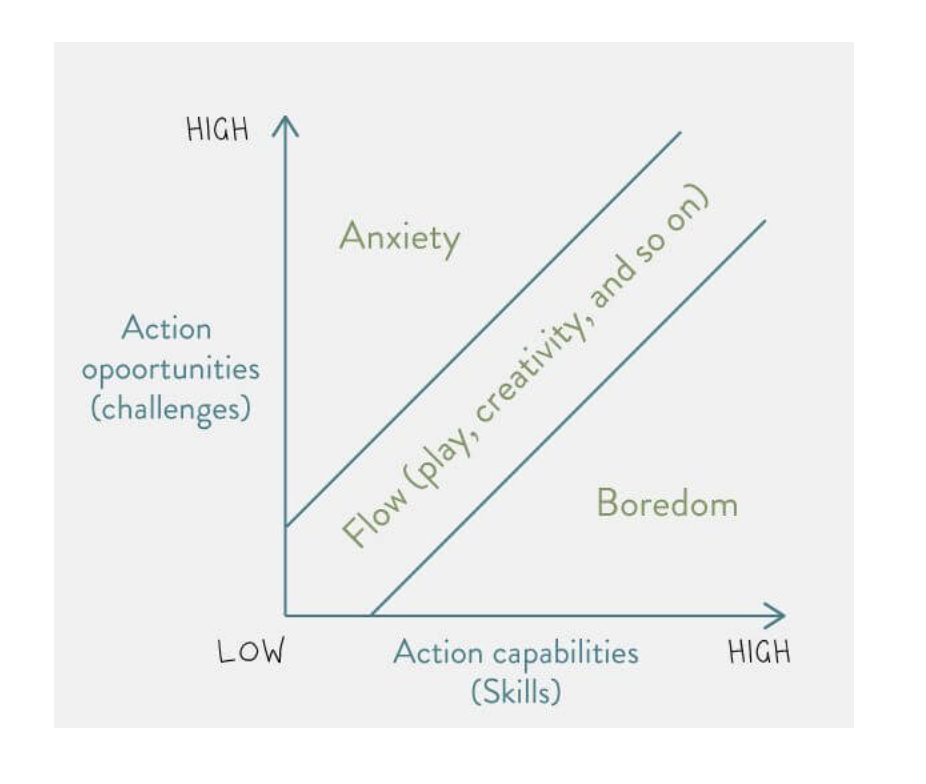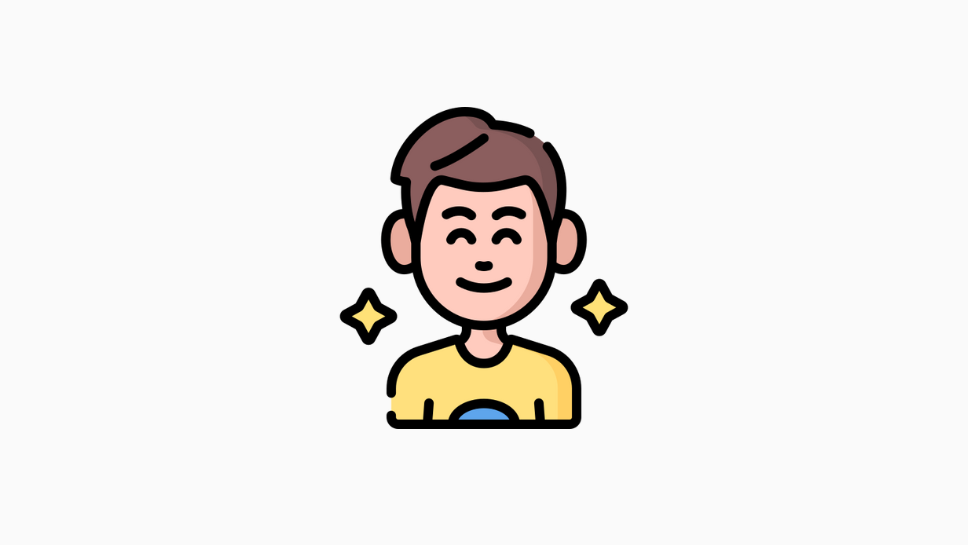Table of Contents
We all generally know what it means to feel happy. It’s difficult to put into words, but it’s those positive emotions that we feel when we pass a test or do something we enjoy.
But, how do we actually be happier day to day?
That’s the million dollar question. Or, the “5.7 billion search queries” question if we type ‘how to be happy?’ into Google.
There’s clearly no single way to answer this question, but I think the PERMA model of wellbeing gives us a pretty reasonable framework on how to be happier.
😁 The PERMA Model
The PERMA model was created by a clever guy working in the field of positive pychology, called Martin Seligman. And it’s basically an acronym that gives us these five building blocks contributing to our wellbeing and happiness. It stands for:
- Positive emotions
- Engagement
- Relationships
- Meaning, and
- Achievement
Now, although there are many ways we can be happier and different people will benefit from the PERMA model in different ways, the general idea is that building each of these 5 pillars can help us to live happier and healthier lives.
So, how do we do this?
🎉 Positive Emotions
Positive emotion is about feeling good and it’s what we normally associate with ‘being happy’. Basically, things like joy, gratitude, cheerfulness, and hope are all good examples of positive emotions.
Now, it’s easy for us to think all this stuff isn’t that easy to control and we have some sort of limit on our happiness depending on our personal circumstances. For example, we may think “God, my life is awful. I can’t see my best friends and my Uncle often locks me in the cupboard under the stairs”. Or we may just hate our job and think that we don’t get paid enough for all our great work.
But, research suggests that we can all develop positive emotions despite our circumstances.
One way to do this is to find opportunities to do more of what you do well. For example, research shows that artists are generally happier with their work than non-artists, because they tend to be doing something that they’re genuinely good at rather than getting a job simply because of its better salary and job security.
In The Happiness Advantage, Shawn Achor talks about a study where volunteers had to pick a personal strength and then use that strength in different ways throughout the week. The study found that these volunteers became significantly happier and experienced greater positive emotions than control groups. And these higher levels of happiness were still there 6 months later.
So if we want to boost our positive emotions, we need to focus on the things we do well and the things we enjoy. If you’re a great salesperson, find ways to get in front of more customers. Or if you love the idea of speaking on camera, why not try starting a YouTube channel.
Just start investing quality time in activities or moments you enjoy.
🤓 Engagement
According to Seligman, engagement is “being one with the music.” Now, this isn’t particularly helpful because what the hell does that actually mean?
Well, it’s basically the same as Csikszentmihalyi’s (cheek-sent-me-high) concept of “flow”, which is when we become completely absorbed in an activity and lose all track of time. Or, as Csikszentmihalyi put it in his book, Flow: The Psychology of Optimal Experience:
“[Flow is] a state in which people are so involved in an activity that nothing else seems to matter; the experience is so enjoyable that people will continue to do it even at great cost, for the sheer sake of doing it”
The book is based on the premise that happiness levels can be shifted by introducing flow. So, the more easily we can engage with our work and enter this flow state, the happier we will be.
But how do we enter the flow state?
Again, there’s no definitive way to do this, but Csikszentmihalyi’s theory is that every activity we do falls somewhere on this graph (see blow), depending on how challenging we find it or how much skill it takes. The ideal place is to be within the “Flow” channel, where the challenge of what we’re doing is roughly equal to the skill we have to do that thing. This is where we’ll experience flow, and therefore be happiest.

For example, let’s say we’re learning to play football and we’re pretty average all round. If we were asked to play against a professional football team, this challenge is going to be ridiculous compared to our skill level so we’re going to feel anxious. But, at the other end of the spectrum, if we decide to play against a bunch of 5 year olds it’s also not going to be too fun because it will be way too easy as our skill level is too high. The sweet spot is finding a team that is closely matched to our abilities.
So, the more consistently we can balance the challenge and skill of whatever we’re doing, the easier we’ll find it to enter flow and be happy.
❤️ Relationships
The third pillar of the PERMA model is ‘relationships’.
As humans, we’ve always needed our tribes and it’s our natural desire to want to be part of some bigger group. So, building authentic social connections is an important part of living a happier life. Whether that be a fleeting romance or a long lasting relationship with friends, family and work colleagues, they’re all great sources of happiness.
In Seligman’s own words, “other people are the best antidote to the downs of life and the single most reliable up.” (Flourish by Martin E.P. Seligman)
And there’s loads of evidence to back this up. One study from Berkeley University found that when people spent more time socialising over the course of a year, they became more satisfied with their lives. Another 80 year study of 268 Harvard students also found that close relationships, more than money or fame, are what keep people happy throughout their lives. The study said that:
“[Close relationships] protect people from life’s discontents, help to delay mental and physical decline, and are better predictors of long and happy lives than social class, IQ, or even genes.”
But, building and maintaining these relationships can be difficult. Like, when we’ve left school or university and we’re not automatically placed into these social groups where we’re forced to interact with others, it can be difficult to find people we connect with.
Research by Jeffrey Hall says that great relationships are a product of time. In other words, it takes about 60 hours to cement a relationship, so if we’re not being intentional about spending time with other people then it’s not gonna be easy. Although, having said that, we can often tell if a friendship is a good one pretty early on. So we shouldn’t waste time pursuing relationships that just aren’t going to work.
But if we put the time into the right relationships it’s a recipe for long-lasting happiness.
⏳ Meaning
What is the meaning of life? Or, better put, what is the meaning of your life?
Finding a reason for existence is probably the hardest part of the PERMA model. Not only does it vary from person-to-person, but we’re the only one who can actually define the meaning of our life. It could be a cause we feel strongly about, it could be our work, or pursuing an activity that we feel we were placed on the earth to do. Whatever it is, it’s up to us.
So, I’m reluctant to literally tell you how to find meaning or purpose, but I can show you a couple of ways that I quite like.
The first way is recognising our place in the universe. Like, if you’ve ever seen that picture of Earth taken by the Voyager 1 Space Probe (below), taken about 3.7 billion miles away, you get a real sense for how insignificant everything is. I found that this is a helpful exercise in realising what we don’t care about and what we don’t find meaningful, allowing us to focus on the things that are meaningful. (I recommend you all watch this)

The second way is to broaden the mind. For example, Hicks and King found that widening our outlook and experiencing different opinions that challenge our own help us to build a greater sense of meaning in life. We can do this through reading things we wouldn’t normally read and not blindly accepting things we’re told by friends or in the news.
Finding meaning isn’t easy because it requires us to reflect on how we feel and our place in the universe. But, the results can be very rewarding.
🥳 Accomplishment
The final pillar of the PERMA model is accomplishment. Or “I did it, and I did it well” as Seligman puts it.
Like, we all take pride in stuff we’ve done. For example, making a tasty meal, finishing a book, or getting up without hitting snooze are all accomplishments that strengthen our self-esteem and our confidence that we are worth something.
But, accomplishment is more than getting top marks in the class or becoming the world’s best guitarist or actually achieving anything. Instead, it’s about seeing progress in learning and mastering a new skill.
This is why I encourage everyone to set intrinsic goals. In other words, these are goals that relate to yourself and you get satisfaction out of doing the thing itself. Whereas an extrinsic goal is something relating to external influences, where we’re only actually happy if we achieve money, fame, status or something like that.
It’s really just about enjoying the journey and the more we can do that the happier our lives will be.

